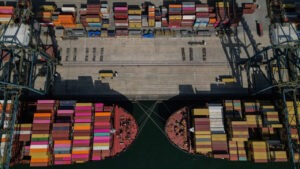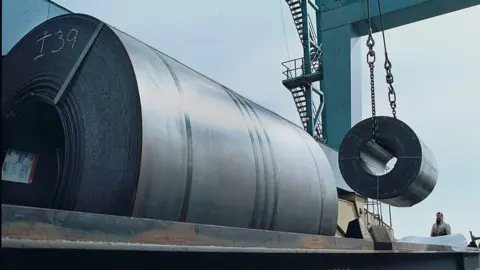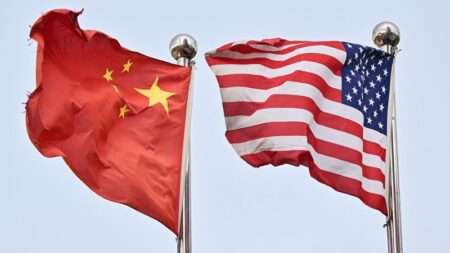In a significant move, US President Donald Trump has ratified an executive order that doubles tariffs on imported steel and aluminium from 25% to 50%. This decision comes at a time when the American steel industry is attempting to secure its position amidst fierce global competition. The tariffs are set to take effect on Wednesday and mark Trump’s second adjustment since he first introduced tariffs on these metals in March.
Steel and aluminium are vital components in numerous industries, including automotive production and food packaging. The hike in tariffs, according to Trump, is aimed at safeguarding the future of American steel manufacturing. However, the reaction from industry observers has been mixed, with many critics warning that such measures could severely impact steel producers abroad, instigate retaliatory actions from other nations, and result in higher costs for domestic consumers reliant on these materials.
As anticipation mounted leading up to this announcement, many industry stakeholders expressed skepticism regarding Trump’s plan. With the imminent imposition of these higher tariffs, there was a palpable sense of uncertainty among businesses that rely on imported steel and aluminium. Businesses, such as Independent Can Co. – led by CEO Rick Huether – have already begun to contemplate the tumultuous changes that these tariffs would entail, including the possibility of customers shifting to alternative materials like plastic or paper for their products.
Historically, the United States has been the world’s largest importer of steel, second only to the European Union, with major sourcing countries including Canada, Brazil, Mexico, and South Korea. During Trump’s first term, the administration deployed tariffs of 25% on steel and 10% on aluminium due to a perceived need to protect industries deemed vital to national security. While earlier efforts to enforce tariffs led to numerous exemptions based on trade negotiations, Trump has sought to eliminate those carve-outs, expressing dissatisfaction over how protective measures were being weakened.
In a rally at a US Steel factory, Trump underscored the necessity of maintaining high tariffs, asserting that a 50% rate is intended to compel US businesses to procure materials from American suppliers. “Nobody’s going to get around that,” he stated, emphasizing his resolve to curb foreign competition.
The timing and implications of the tariff adjustments come with additional layers involving international trade relations. Though the UK has received a temporary exemption from the new tariffs, maintaining the previous 25% rate, there remain concerns about the broader impact on transatlantic trade dynamics. Officials in both nations are involved in efforts to secure favorable trade agreements, but it is uncertain how these tariff changes will affect negotiations moving forward.
In the UK, Trade Secretary Jonathan Reynolds met with US Trade Representative Jamieson Greer to discuss the ongoing trade talks. The UK government expressed contentment that the existing trade discussions resulted in the exemption for British steel. However, industry leaders like Gareth Stace, the director general of UK Steel, voiced alarm over the potential devastation a 50% tariff would bring, warning that it could lead to mass cancellations of orders and severe restrictions in trade with the US, which constitutes 7% of the UK’s steel exports.
While economic forecasters note that the long-term ramifications of steel and aluminium tariffs could include a ripple effect across other sectors, some estimates indicate that Trump’s prior tariffs resulted in net job loss across the wider economy. Business owners like Chad Bartusek, who operates a manufacturing firm with significant reliance on imported steel, are already grappling with the cost implications of these tariff changes. Bartusek is facing an unforeseen $145,000 tariff bill that he had initially projected to be around $72,000, reflecting the immediate challenges that businesses thrust into chaos are likely to endure.
As the complex web of implications prompted by the doubling of tariffs unfolds, it appears that American industries, both manufacturing and consumer-facing, will need to navigate a tumultuous landscape. The overarching question now remains as to how these tariffs will shape trade relations in the coming months and what strategies industries will adopt in response to such shifting policies.











